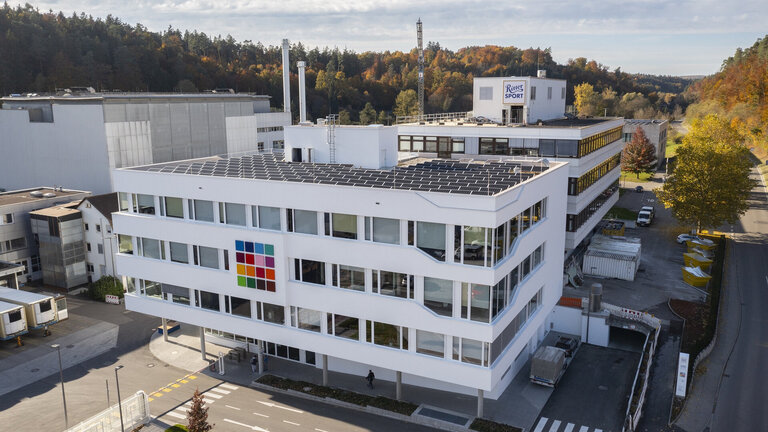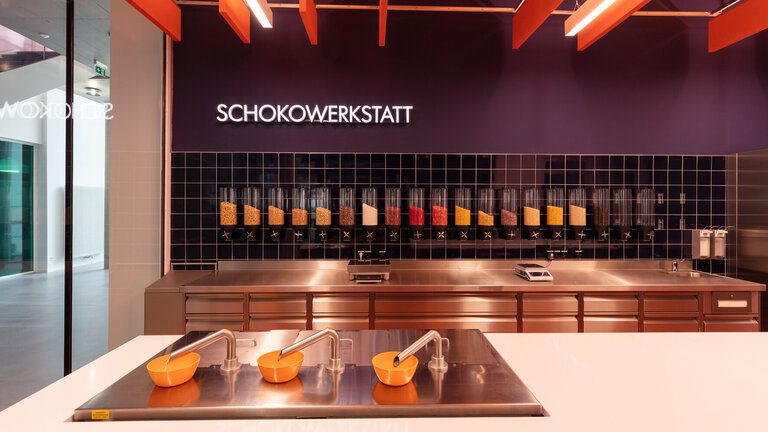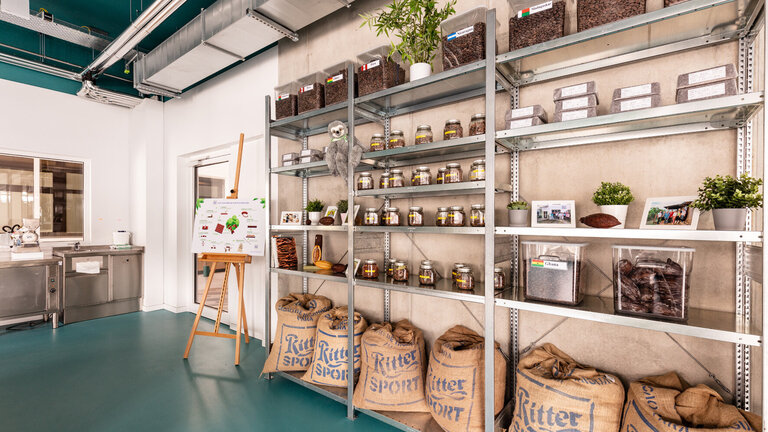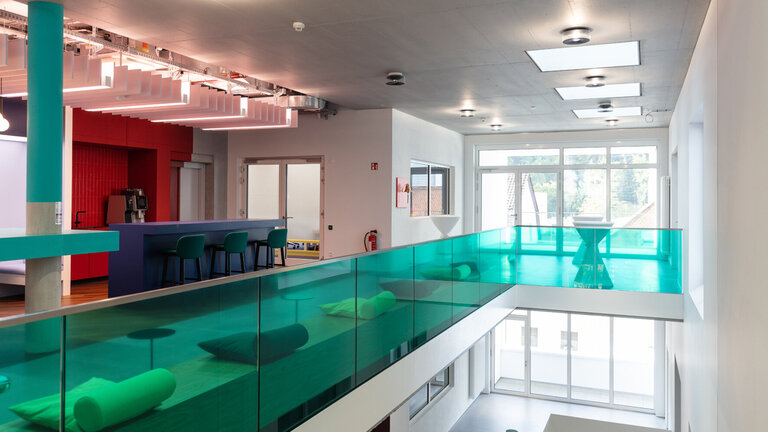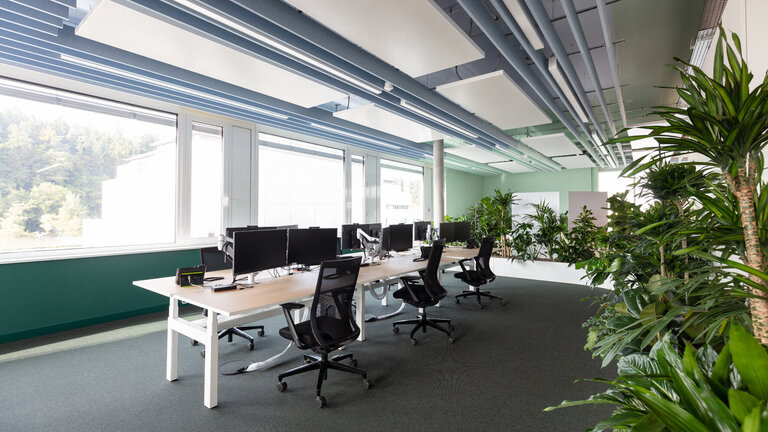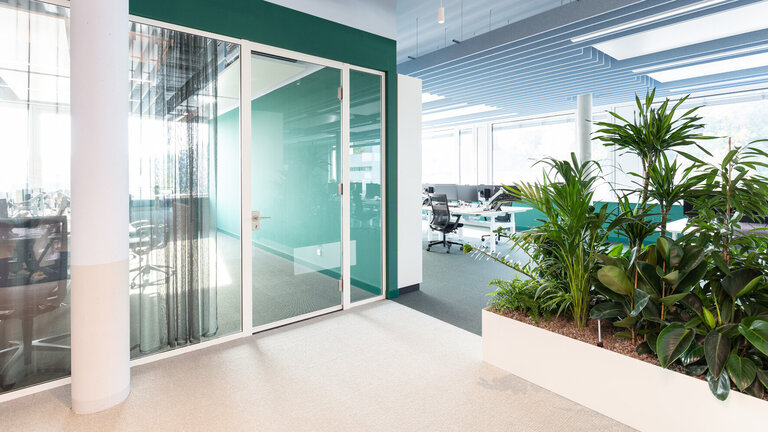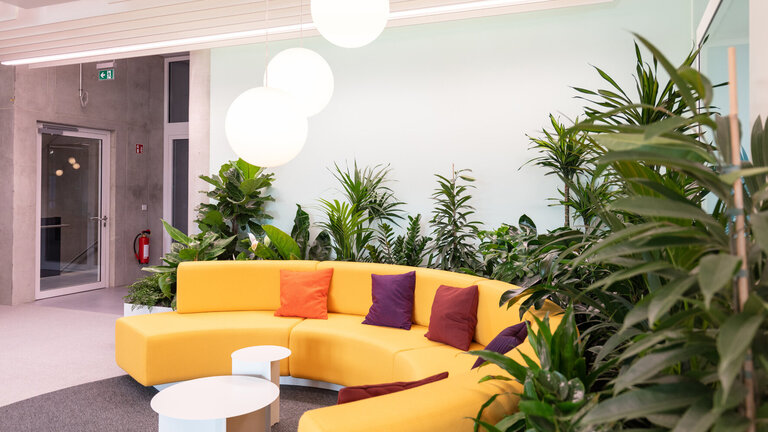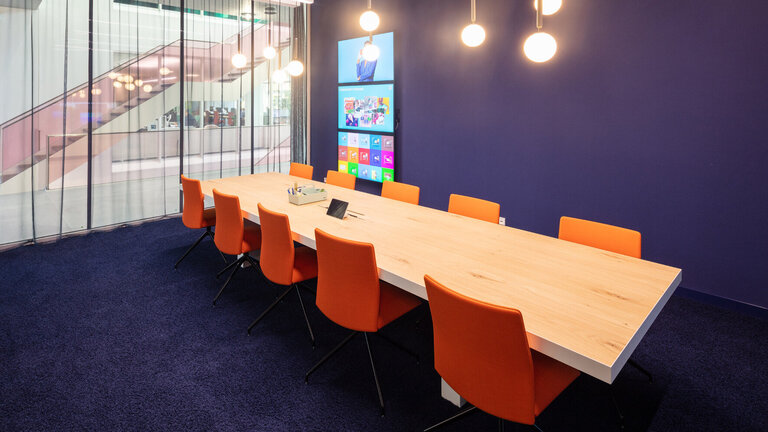Stuttgart, Germany, March 24, 2022. An invisible wooden façade, a brightly colored interior with lush indoor vegetation and an innovative water and energy concept: with the extension building of the Chocolate Center at its headquarters in the German town of Waldenbuch, Alfred Ritter GmbH & Co. KG is blazing a trail for sustainable building and innovative working. Because of its economic use of resources, its recyclable materials and its high level of user comfort, the building has now been awarded the DGNB certificate in gold by the German Sustainable Building Council (DGNB). Ritter invested around EUR 20 million in the new property. Sustainability experts of Drees & Sommer SE supported the project. The consulting firm specializes in construction and real estate.
‘We were very keen to erect a future-oriented and environmentally friendly building. The certification by the German Sustainable Building Council (DGNB) shows that our efforts have been worthwhile. We now have a demonstrably sustainable building which offers our staff and our visitors a high amenity value in a healthy environment,’ explained Benjamin Flaig, the responsible project head at Ritter.
The new Chocolate Center consists of an existing building and the extension building. Since its opening in November it has, inter alia, provided workstations and encounter rooms for about 100 employees and the innovation factory with a research and development department. 47 criteria must be fulfilled to achieve a successful certification by the German Sustainable Building Council. ‘We had already done a great deal of work on sustainability, but in an entire construction project this was a new subject for us. Therefore we asked the experts from Drees & Sommer to come on board,’ commented Benjamin Flaig.
A Very Close Look at Each Building Component
The extension aims to be beneficial both for the environment and for the people who work in it – a healthy building on the outside and the inside. ‘We selected over 500 materials and products based on the quality standards of the German Sustainable Building Council and on extended Cradle to Cradle criteria,’ said Daniela Schneider, an engineer with responsibility for architectural and environmental issues of EPEA – Part of Drees & Sommer. The ‘Cradle to Cradle’ stands for a continuous circular economy in which the materials used in the building are also regarded as input materials for later buildings. Structures based on the Cradle to Cradle principle are designed so that they are either largely degradable in the biosphere or – in the majority of cases in the construction industry – can be reused as raw materials as part of the circular technical economy.
The implementation of this principle in the Ritter extension building begins with the façade, which mainly consists of wood although this is not apparent at first glance. To fulfill the need for recyclability, both the façade and the other elements of the building with several different materials or component layers are assembled with hardly any adhesives. Instead, they are bolted together or joined by other removable connections so that they can be separated into homogeneous materials and recycled when the building is altered or demolished.
Sustainability Meets Design
The use of sustainable materials is a particularly important goal in the fittings for interior rooms: ‘Here, only durable and recyclable materials and products are used which are also low-emission and largely free from pollutants. This ensures the best possible quality of the interior air’, explained Daniela Schneider. Everything is checked – from the wall paint and carpet tiles to the desks, chairs and lamps and even the curtains, plants and plant pots.
But this does not mean that the interior design of the building is limited to plain walls and simple wooden furniture. The extension building of the Chocolate Center is living proof that healthy building and modern design can go hand in hand. The colors and materials used in the interior design reflect the visual identity of the Ritter Sport brand. Bio-dynamic lighting between the brightly colored design elements creates a pleasant atmosphere. The LED lamps imitate the natural progress of daylight, with a yellowish shade in the morning and evening and a cooler, bluish shade in the middle of the day. Light has a demonstrably great effect on the body and the internal clock, so bio-dynamic lighting can positively influence our sense of well-being. Lush indoor vegetation with plants that have a cleaning effect on the air also creates a pleasant indoor climate.
Innovative Water and Energy Concept
Ritter especially shows its innovative approach in the technical systems. For example, rainwater is collected on the roof surfaces, stored in a cistern, filtered, and then used in the building, e.g. to water the plants. A photovoltaic installation which takes up nearly the whole roof surface of the extension provides regenerative electricity. The supply of heating and cooling is provided by the company's existing network, which is powered by the central energy system which was modernized in 2016. Surface heating and cooling systems, combined with the ventilation system, ensure that the building offers a good comfort level and energy-efficient operation throughout the year. Thermal activation of building components is used to ensure the basic temperature by means of water-bearing pipes in the ceilings.
Room for Another Story on Top
Another special feature of the new building is that it is highly flexible. If the company continues to grow, this ensures that it will not reach its limits too soon because the interior can be adapted to different use scenarios, and even the building itself can be adapted – in spite of the restricted space on the site. This is possible because of the load-bearing structure of the new building: it is strong enough to add another full story on top of the building if needed. The roof is also designed in a way that it can be dismantled at any time – and the materials which are used in the roof, such as the roof membrane, can be reused. This means that this building is designed with a long-term perspective in every respect.
